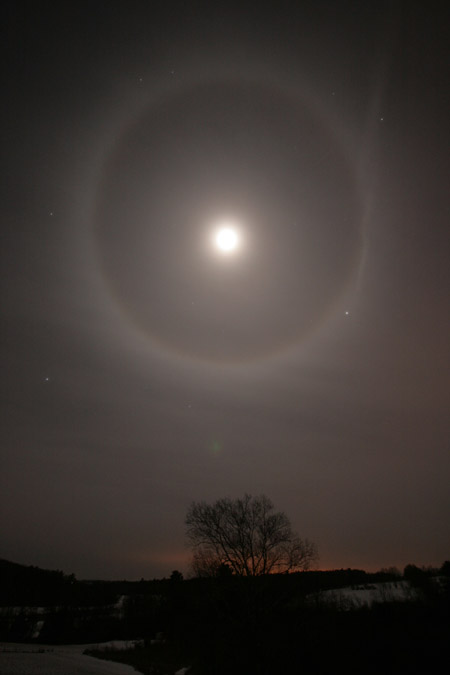Difference between revisions of "January 25, 2013"
| (4 intermediate revisions by the same user not shown) | |||
| Line 1: | Line 1: | ||
__NOTOC__ | __NOTOC__ | ||
=Misplaced Dot= | =Misplaced Dot= | ||
| − | + | <!-- Start of content --> | |
| − | + | <!-- ws:start:WikiTextHeadingRule:0:<h1> --> | |
| − | |||
<table class="wiki_table"> | <table class="wiki_table"> | ||
| − | + | <tr> | |
| − | + | <td><!-- ws:start:WikiTextLocalImageRule:14:<img src="/file/view/LPOD-Jan25-13.jpg/401243946/LPOD-Jan25-13.jpg" alt="" title="" /> -->[[File:LPOD-Jan25-13.jpg|LPOD-Jan25-13.jpg]]<!-- ws:end:WikiTextLocalImageRule:14 --><br /> | |
</td> | </td> | ||
| − | + | <td><em>image by [mailto:stankiewiczr@nexicom.net Rick Stankiewicz], Peterborough, Ontario, Canada</em><br /> | |
<br /> | <br /> | ||
Around midnight on January 23rd, I checked outside in my backyard near Keene, Ontario, Canada just before turning in for the day and upon looking up at the Moon, what did I see but a beautiful and complete Lunar Halo or ring around the Moon. This one was bright enough that I could see the colours (heavier reds) of a rainbow on the inside of the "ring", especially at the lower portion of the ring, but most of the colours are diffuse and scattered making the main ring appear whitish. Halos typically have a radius of 22 degrees, caused by refraction of light by randomly oriented hexagonal ice crystals. The added bonus this particular evening was the positioning of Jupiter right at the 4 o’clock position and right in the halo portion. Wow, what a nice coincidence to end the day. It was a little on the chilly side this evening too at -22 C, but it was calm and just the right amount of high thin cirrus cloud laden with random ice crystals to produce this atmospheric phenomenon. Once again proving it pays to be "looking up", no matter what the time of day or weather outside.<br /> | Around midnight on January 23rd, I checked outside in my backyard near Keene, Ontario, Canada just before turning in for the day and upon looking up at the Moon, what did I see but a beautiful and complete Lunar Halo or ring around the Moon. This one was bright enough that I could see the colours (heavier reds) of a rainbow on the inside of the "ring", especially at the lower portion of the ring, but most of the colours are diffuse and scattered making the main ring appear whitish. Halos typically have a radius of 22 degrees, caused by refraction of light by randomly oriented hexagonal ice crystals. The added bonus this particular evening was the positioning of Jupiter right at the 4 o’clock position and right in the halo portion. Wow, what a nice coincidence to end the day. It was a little on the chilly side this evening too at -22 C, but it was calm and just the right amount of high thin cirrus cloud laden with random ice crystals to produce this atmospheric phenomenon. Once again proving it pays to be "looking up", no matter what the time of day or weather outside.<br /> | ||
| Line 19: | Line 18: | ||
<br /> | <br /> | ||
<hr /> | <hr /> | ||
| − | + | <p><b>Yesterday's LPOD:</b> [[January 24, 2013|Nectarian Ridges]] </p> | |
| − | + | <p><b>Tomorrow's LPOD:</b> [[January 26, 2013|The Atlas Helps Public Outreach]] </p> | |
| − | ---- | + | <!-- End of content --> |
| − | + | {{wiki/ArticleFooter}} | |
| − | |||
Latest revision as of 14:29, 8 February 2015
Misplaced Dot
 |
image by Rick Stankiewicz, Peterborough, Ontario, Canada
Yesterday's LPOD: Nectarian Ridges Tomorrow's LPOD: The Atlas Helps Public Outreach COMMENTS?Register, Log in, and join in the comments.
|



